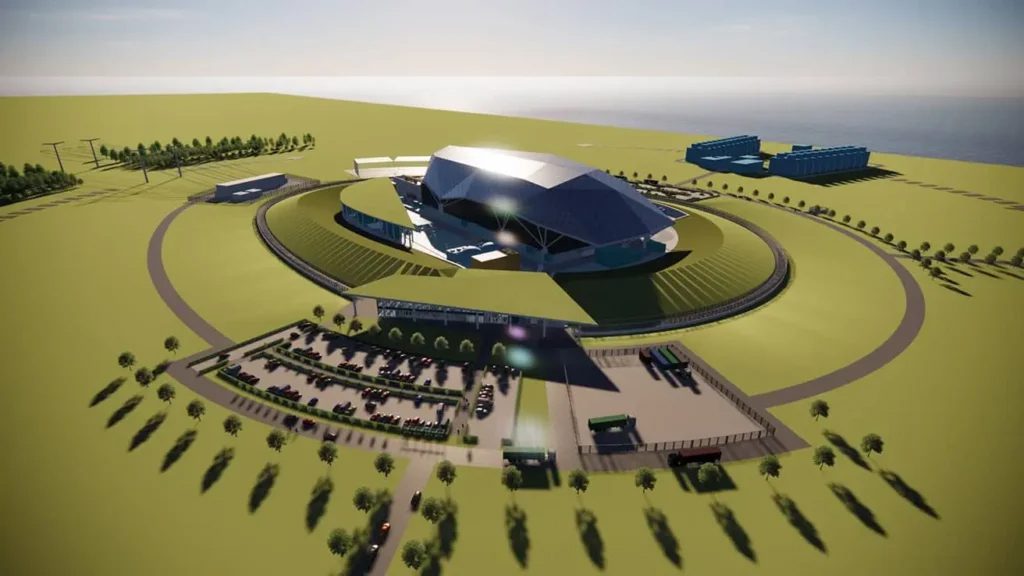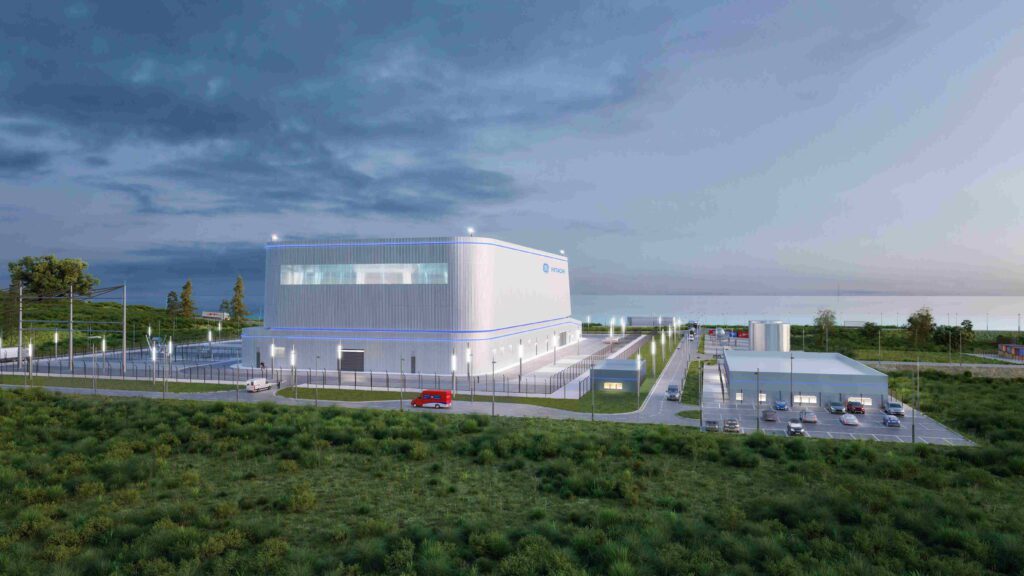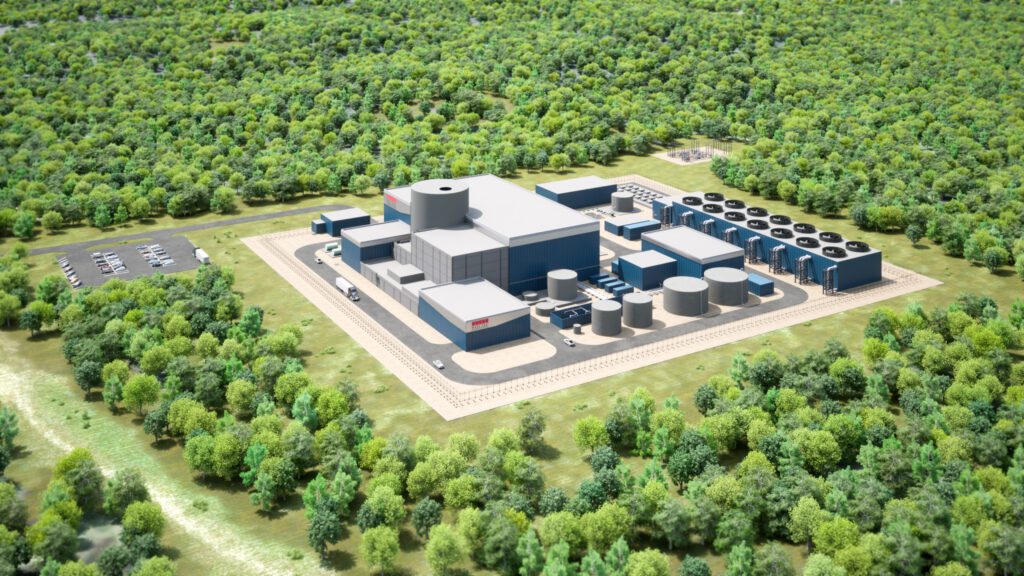UK SMR Competition Narrows Contenders to Four Nuclear Designs
The UK government has narrowed its shortlist of technologies competing in its flagship Small Modular Reactor (SMR) competition to four candidates. On Sept. 25, it announced that Westinghouse, GE-Hitachi Nuclear Energy (GEH), Holtec Britain, and Rolls-Royce SMR remain in the running to negotiate potentially multi-billion-pound nuclear technology development contracts under the fast-track initiative aimed at delivering an operational SMR by the mid-2030s.
Great British Nuclear (GBN)—the government body tasked with delivering the UK’s fourfold nuclear power expansion—in a short note, said the four companies had cleared the initial phase of the SMR technology selection process. “In the next stage of the procurement process, bidders will be invited to enter negotiations with GBN,” it said.
The four companies’ technologies were among six shortlisted by GBN in October 2023 to vie for the next stage of the competitive process that it launched in July 2023. In March 2024, the six vendors were invited to submit initial tenders for the two-stage contract for design, development, and construction contract.
When it announced its shortlist last year, GBN anticipated awarding contracts by summer 2024. However, delays have been reportedly compounded by a number of factors, including the UK’s snap generation election in July 2024, which led to the defeat of the governing Conservative Party, led by Rishi Sunak by the opposition Labour Party, led by Keir Starmer, in a landslide victory. No updated timeline has been provided, but GBN has reiterated its commitment to making the competition “the fastest of its kind in the world.”
EDF and NuScale Out of the Running
| For more on each of the initial six selections, see POWER’s in-depth summaries here: UK Shortlists Six Nuclear Designs in SMR Competition, Intends to Award Contract by Summer 2024 |
While EDF’s 340-MW NUWARD pressurized water reactor (PWR) was part of the initial shortlist, the French company withdrew from the competition in July 2024, citing an “incompatibility between the level of commitment and the time schedule required by GBN and the level of maturity of the Nuward SMR.”
GBN’s down-selection unveiled on Wednesday, meanwhile, also eliminates NuScale’s VOYGR PWR, the only SMR so far certified by the U.S. Nuclear Regulatory Commission (NRC). While NuScale had suggested it was uniquely prepared to deploy 77-MW VOYGR plants in the UK through its global development partner ENTRA1 Energy, the company will likely refocus its operations on other international markets, including an ongoing project with RoPower in Romania at the Doicesti site. During an earnings call in August 2024, NuScale CEO John Hopkins said the company is pursuing opportunities in energy-intensive industries such as data centers and artificial intelligence infrastructure alongside industrial decarbonization efforts.
UK SMR Competition: Who Remains?
Westinghouse Electric’s AP300. As POWER last year reported, Westinghouse’s selection is for its AP300, a “downsized” version of the company’s flagship AP1000 Generation III+ PWR technology, which it unveiled in May 2023. Westinghouse has said it is targeting design certification for the AP300 SMR by 2027 and could be ready for construction to begin by 2030.
The company, meanwhile, announced on Aug. 23 that it received formal approval from the UK Department of Energy Security and Net Zero (DESNZ) to enter the first stage of the two-step Generic Design Assessment (GDA) for the AP300. The GDA is non-mandatory process that allows the Office of Nuclear Regulation (ONR) to begin assessing the safety, security, safeguards, and environmental aspects of new reactor designs before site-specific proposals are brought forward.
The company also has a potential customer. Community Nuclear Power (CNP), a UK-based independent SMR development company, in February 2024 announced it would spearhead a project to build four AP300s in North Teeside, Northeast England, anticipating commercial operation by the early 2030s.
With proven technologies and regulator familiarity, the AP300 can get to market quickly, economically, and with certainty,” said Patrick Fragman, Westinghouse president and CEO, on Wednesday. “We look forward to working with GBN through the final review and selection process.”

Rolls-Royce SMR’s 470-MWe PWR. Rolls-Royce SMR has said its selection is for its “home-grown” 470-MWe PWR design, which features a “factory-built” plant.
Rolls Royce SMR, in July 2024, cleared the ONR’s second stage of the GDA (marking the first time since the modernized GDA process was launched of the ONR’s issuance of Step 2 GDA statements). The company has now progressed to Step 3, which allows the regulator to assess in more detail the evidence that supports claims made about Step 2 submissions and ultimately achieves a “full” GDA.
In a statement on Thursday, Chris Cholerton, Rolls-Royce SMR CEO, underscored that Rolls-Royce SMR “is the UK’s only SMR company and is already 18 months ahead of competitors in the regulatory approvals process. Today’s news that we will progress to formal negotiation with GBN will help us to maintain this important first-mover advantage.”
Rolls-Royce SMR is also making substantial progress in deploying a fleet. “Rolls-Royce SMR has been chosen by the Czech Republic to deploy their fleet of SMRs and is in the final two in Sweden’s SMR selection process. Success in the UK will further strengthen our position as the leading SMR company and ensure the UK is able to capitalize on this transformational opportunity for the domestic supply chain,” Cholerton said.

GDA: A Non-Mandatory But Significant Regulatory ProcessThe GDA is a non-mandatory regulatory process overseen by the UK Office for Nuclear Regulation (ONR) and Environment Agency (EA) to ensure that new nuclear power plants built in the country “meet high standards of safety, security, environmental protection and waste management.” The joint process is separate from site-specific licensing, which the ONR grants as a legal document for the entire lifecycle of a nuclear power facility, and environmental permits from the EA (or Natural Resources Wales). A three-step technology-neutral assessment introduced in 2007, the GDA serves as a first step to reduce project risk, providing confidence that a proposed design can be built, operated, and decommissioned in the UK under existing standards. A “full” GDA, comprising all three steps, typically takes about four years. Step 1 is regarded as the “project initiation stage” of the design assessment process. It involves discussions to ensure a full understanding of the requirements and processes that will be applied, readiness of the requesting party to begin Step 2, and a review of the party’s security and Quality Assurance (QA) arrangements. Step 2 is the first substantive technical assessment step. It focuses on a fundamental assessment of the environmental protection, safety, security, and safeguards aspects of the design. “This would identify if there any major issues meaning a reactor would not meet regulatory expectations in its current design,” ONR explains. Vendors can choose to stop the GDA after two steps, which involves about two years. Step 3, which spans another two years, involves a more detailed assessment of submissions, but it could pave the way to a design acceptance confirmation (DAC) or Statement of Design Acceptability (SoDA) from ONR and the environmental regulators. A DAC or SoDA “will only be issued at the end of Step 3 of the GDA if the design meets the high safety, security, safeguards, environmental protection, and waste management standards expected by our regulatory frameworks,” says ONR. Essentially, if an organization sets out to build and operate a reactor in the UK that has not been subject to a three-step GDA, it would need to carry out a detailed design assessment through ONR’s statutory regulatory processes, established through the nuclear site license before permission could be granted to start nuclear safety-related construction. The GDA is not a “substitute for the nuclear site licensing process, but it will make a significant contribution to ONR’s assessment of the future site-specific safety case,” ONR notes. “It is up to investors, developers, and vendors—whether they be private or government—to decide whether the shorter two-step GDA gives them enough confidence to proceed with procuring a site, setting up a licensee organization, and start to place contracts for components and construction activities.” To date, UK regulators have completed GDAs for four designs. All reviews have taken up to five years or more. EDF’s UK EPR, whose GDA review spanned 2007 to 2012, is now under construction at Hinkley Point C and is proposed for Sizewell C (a project the UK will bolster with a 50% ownership stake). A review of Westinghouse’s AP1000 occurred between 2007 and 2017, while a review of GEH’s ABWR spanned 2013 to 2017. The most recent review of Chinese firm CGN’s UK HPR1000 took five years, from 2017 to 2022, culminating in the issuance of a DAC and a SoDa. |
GEH’s BWRX-300 BWR. GEH’s selection is for its BWRX-300, a 300-MWe boiling water reactor (BWR). The BWRX-300, GEH’s flagship SMR, is the 10th evolution of GE’s boiling water reactor (BWR) design. The design is based on the Gen III+ 1,520-MW ESBWR, which the NRC certified in 2014.
ONR in January 2024 kicked off a two-step GDA for the reactor design. Earlier this year, GEH also won the UK’s second grant selection (of £33.6 million) under the UK Future Nuclear Enabling Fund (FNEF), a program aimed at boosting nuclear technology maturation as the country races to potentially triple its nuclear capacity to up to 24 GW by 2050.
GEH is already fielding several projects or prospects around the world for its reactor design. Ontario Power Generation (OPG) in December 2021 selected the BWRX-300 for its first SMR deployment at the Darlington Nuclear Facility in Ontario. “Early site preparation work has been completed, with construction expected to start in 2025 and commercial operation to commence by the end of 2029. A total of four 300 MW units are planned for the Darlington site,” the company noted on Thursday.
“We have big ambitions for deploying our SMR technology in the UK, so we are proud to advance to the next stage of GBN’s competition,” said Andy Champ, GEH UK Country leader. “With site works already underway in Canada for our first BWRX-300—the most advanced SMR project in the G7—we are in a strong position to lead SMR deployment in the UK by leveraging our expertise in other markets.”
On July 7, 2023, the Ontario government announced it would work with OPG to commence planning and licensing for three additional SMRs for a total of four SMRs at the Darlington new nuclear site. OPG is notably partnering with the Tennessee Valley Authority (TVA) and Polish firm Synthos Green Energy (SGE) to shape a standard design for the BWRX-300.
TVA is meanwhile exploring a BWRX-300 deployment at the Clinch River site in Tennessee. Under the New Nuclear Program, TVA is currently preparing an NRC construction permit application that could target deployment in the 2030s, though its final approval will be subject to the required environmental review and the board’s approval. SGE and partners, meanwhile, are looking to build a fleet of 79 BWRX-300 SMRs by 2038.
Saskatchewan provincial utility SaskPower intends to make a decision to build a potential BWRX-300 project in 2029. Fermi Energia has so far already selected BWRX-300 for deployment in Estonia, and agreements are in place in the Czech Republic and Sweden to support BWRX-300 deployment. GEH also says “active discussions” are taking place in the Middle East, Africa, Asia, Australia, and Latin America.

Holtec’s SMR-300 PWR. Holtec Britain, a subsidiary of American firm Holtec International, submitted its SMR-160, but it has since released a larger 300-MW PWR design, the SMR-300. The principal strengths of the design are “its inherent safety, robust security, simple and reliable operation, flexible application, rapid constructibility, and competitive economics,” Holtec notes.
On Aug. 1, Holtec Britain completed Step 1 of the GDA for its SMR-300 design—noting the approval was received in a “mere 10 months.” ONR notes the GDA is being conducted on a twin-unit design, comprising two SMR-300 reactors. “Innovation comes from the extensive use of passive safety systems and a single steam generator per reactor,” it says.
Supported by a £60 million investment, including £30 million from the UK government’s FNEF, the Holtec Britain team has moved to triple in size and relocate its UK headquarters to Bristol. Backed by its U.S. parent company and key partners Hyundai Engineering and Construction and Mitsubishi Electric, Holtec plans to establish a heavy manufacturing plant in the UK to build SMR-300 components.
Holtec, notably, is spearheading an effort to revive the 800-MW Palisades Nuclear Power Plant in Michigan. In December 2023, it kicked off a program to build its first two SMR-300 reactor units at the plant. It plans to file a Construction Permit Application (CPA) for the two Holtec units in 2026, shortly after the existing Palisades plant returns to service (by the end of 2025). Holtec’s target commissioning date for the first SMR-300 plant is mid-2030, though that is subject to the NRC’s regulatory reviews and oversight.

—Sonal Patel is a POWER senior editor (@sonalcpatel, @POWERmagazine).